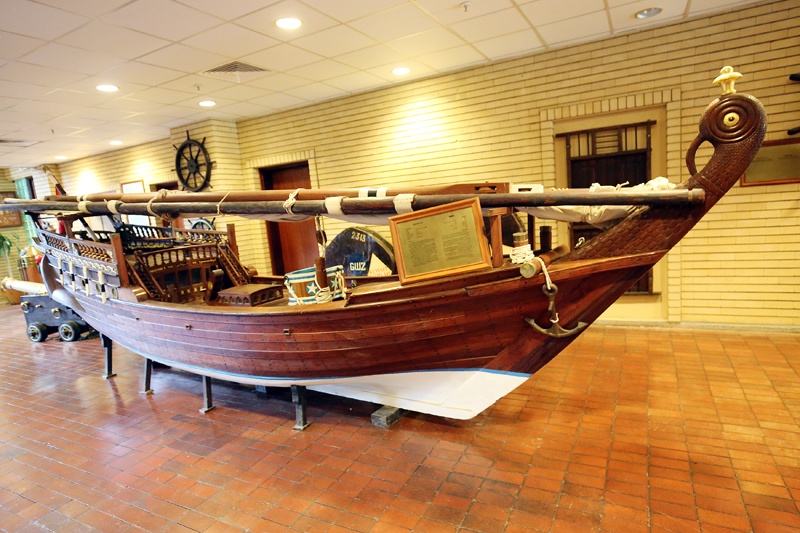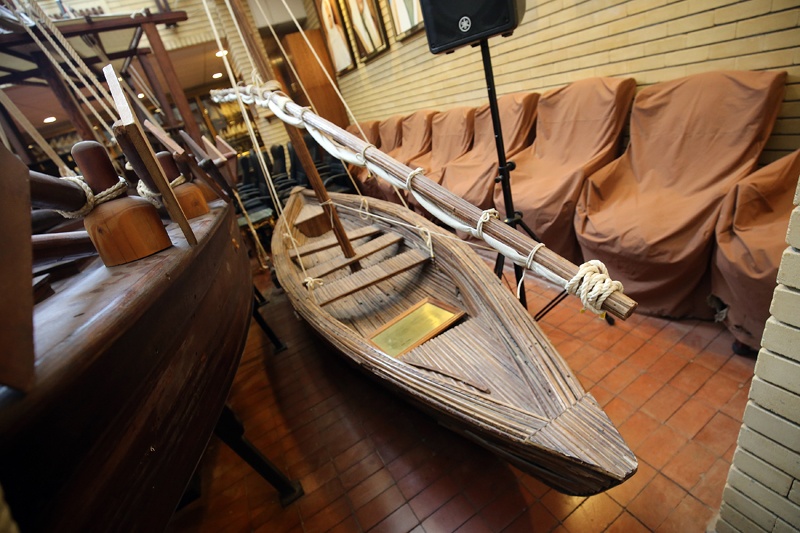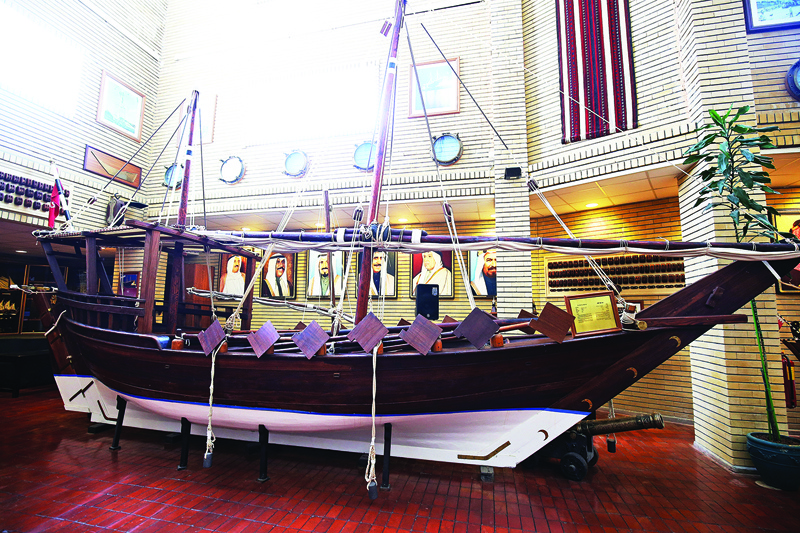By Ben Garcia
The Marine Museum at Radisson Blu Hotel was founded by late Abdul Husain Mohammed Rafie Marafie as a tribute to Kuwait's maritime heritage. It has a display of traditional dhows and collections of various seafaring objects. The Marafie family, owners of Radisson Blu Hotel, wish to preserve this legacy, once the main sources of livelihood of many Kuwaiti families prior to the discovery of oil. The Radisson Blu Hotel itself was conceptualized and modeled on the famous boats of Kuwait.
The maritime museum houses traditional boats, with some built according to the sizes and standards of the original boats previously used. Wooden dhows have a long tradition in the Arabian Gulf and are part of the history and tradition of this region. For centuries, these boats cruised the Gulf carrying goods and foodstuff for people living in the area. Even drinking water has been carried by dhows.
Visitors to the museum can experience the authentic feeling of ancient seafaring. The Marine Museum opened in 2000, together with the commemoration of Al Hashemi II, the majestic dhow anchored at Radisson Blu Hotel. The Marine Museum is located opposite the Al Hashemi II, which is now used to host conferences, seminars, weddings and many other events.
Al Hashemi II holds a Guinness World Record as the largest wooden dhow ever built. The Marine Museum is open to visitors and can be accessed through the Radisson Blu management. Visitors are advised to call Radisson Blu Hotel ahead of time for an appointment. The museum is open from 9 am to 5 pm.
Boats at the museum
Shasha
This is one of the oldest and most popular type of boats, used by native fisherman around 1,000 years ago. The boat was oar-driven and carried a maximum of two people. It was entirely made from date palm fronds tied with coir to form a point at bow and stern.
Sambuk
This typical vessel of the Red Sea was one of the most common and numerous among larger deep-sea trading dhows of the Gulf, Oman and Saudi Arabia. The design of the sambuk reflects the European influence of the 16th century and is the forerunner of other dhows such as the baghlah and ganjah.
Baghlah
Baghlah was used for cargo purposes from the 19th century up to the 1960s. Baghlahs were built in many Kuwaiti and Omani ports and were the pride of the Kuwaiti merchant fleet. They were mostly used to transport dates and Arabian horses to India, carrying wood and other cargo on their way back to all Gulf ports.
Abreej
The abreej, a medium-sized dhow, was used as cargo carrier in the region. Modern and powerful engines were installed in many of them in the 1960s. It was the most common dhow in the Arabian Gulf.
Batteel
The batteel was used as a flagship of the pearling fleet. It also played a significant role as a trading ship in Kuwait until the baghlah emerged and replaced it. The batteel had very slender lines and was characterized by its ornate stern emblem. It is the most outstanding among Arab vessels in appearance.
Pearling boom
This was one of the most popular type of pearling crafts in Kuwait. It was originally designed by Kuwaitis. This vessel was used only for pearling during the pearling season from mid-May to mid-September.
Water boom
The water boom is a true Kuwaiti dhow. Its design evolved as a result of Kuwait's growing demand for fresh water. As Kuwait grew, the water provided by the few scattered wells was no longer sufficient for the increasing population. In 1925, the first water boom sailed to the Shatt Al Arab river in Iraq and brought back barrels filled with fresh water.
The boom
It is a type of deep-sea sailing ship similar to the boom Safar. This type of boom was used by Kuwaiti merchants for long voyages, for example to carry bulky cargo from India and Africa to Kuwait. Most booms had two masts, but some of the larger ones had three. The double-ended boom was cheaper to build than the more elaborate transom-sterned baghlagh or ghanjah, hence it still withstands the test of time. The image of the boom appears on the Kuwaiti currency and government emblems. The Mohammedi II, the largest sailing boom ever, was built in India in 1916 and could carry up to 6,000 men (480 tons).








